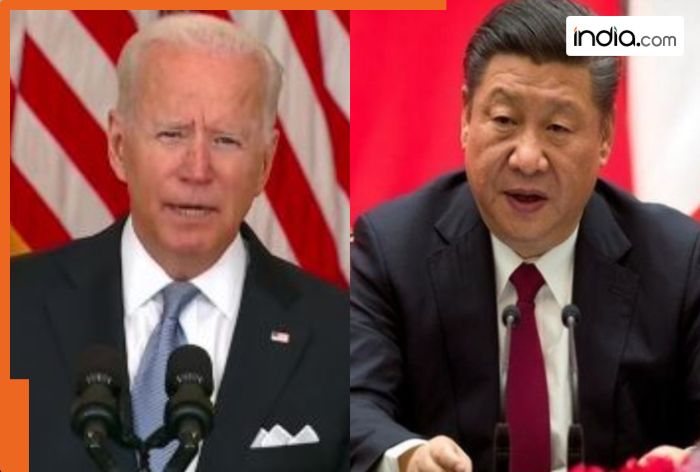China’s pursuit of a nuclear-powered aircraft carrier represents a significant shift in global naval dynamics, signaling the nation’s intent to assert dominance on the high seas. Drawing comparisons to the United States’ formidable fleet, which boasts 11 nuclear-powered aircraft carriers, and France’s single carrier, China’s ambitions mark a critical juncture for global geopolitics. The advancement of this technology poses multifaceted challenges, particularly for India and the United States, while reflecting the intricate interplay of military modernization, strategic rivalries, and evolving power structures in the Indo-Pacific region.
The South China Morning Post reported that China recently developed a prototype nuclear reactor intended for large surface warships. Built at a secluded mountain site near Leshan in Sichuan province, this reactor is designed to enable extended operational capabilities without the need for frequent refueling.
Such advancements are not just about technological milestones but also about extending China’s strategic reach, enabling longer deployments, and enhancing its ability to project power across distant theaters. Nuclear propulsion would allow Chinese aircraft carriers to carry more fuel and weapons for their aircraft, providing a considerable advantage in sustained maritime operations.
Insights from the Middlebury Institute of International Studies in California reveal that China’s 701 Institute, a key player in aircraft carrier development, has been gathering reactor equipment for potential installation on large surface warships. This development is in line with China’s longstanding aspirations to match and eventually surpass the naval capabilities of traditional superpowers. The 701 Institute’s pivotal role underscores the integration of state-directed innovation with military strategy, a hallmark of China’s approach to technological and defense advancements.
While China’s move is a clear assertion of its rising global ambitions, it has also intensified pressure on India. The two nations, despite attempts at restoring trust following border tensions, remain strategic rivals in the Indo-Pacific. India, lacking a nuclear-powered aircraft carrier, faces a significant strategic disadvantage.
Although Union Defence Minister Rajnath Singh announced in May that India plans to build one soon, the timeline for such an endeavor remains uncertain. Developing and deploying a nuclear-powered carrier involves immense financial, technological, and logistical challenges, requiring years of focused effort and investment.
For the United States, China’s advancements present a complex dilemma. As the leading global power with the most advanced navy, the U.S. must grapple with the implications of China narrowing the technological and strategic gap. This development could reshape the balance of power in the Indo-Pacific, a region already marked by heightened tensions over Taiwan, the South China Sea, and the broader contest for influence. Moreover, China’s efforts may inspire other nations to accelerate their naval modernization programs, potentially igniting a regional arms race.
Historically, aircraft carriers have been symbols of military prestige and power projection. From the U.S. Navy’s dominance since World War II to the Royal Navy’s pioneering efforts during the early 20th century, these behemoths of the sea have shaped the course of global conflicts and diplomacy. China’s push to develop a nuclear-powered carrier can be seen as an attempt to claim its place in this historical narrative, aligning its naval ambitions with its broader goal of achieving great-power status.
Experts argue that China’s advancements highlight the need for collaborative regional responses. India, for instance, could strengthen its naval partnerships with countries like the U.S., Japan, and Australia under frameworks like the Quad. Joint exercises, intelligence sharing, and technology transfers could help India bolster its maritime capabilities and counterbalance China’s growing influence. Additionally, India must prioritize indigenous defense manufacturing, leveraging its talent pool and technological expertise to fast-track projects like the nuclear-powered carrier.
From a global perspective, China’s move underscores the evolving nature of maritime security and the importance of multilateral frameworks in managing rising tensions. The United Nations Convention on the Law of the Sea (UNCLOS) and other international agreements may need to be revisited to address the implications of advanced naval technologies and ensure peaceful coexistence in contested waters.
Key Takeaways:
- Strategic Implications: China’s nuclear-powered aircraft carrier marks a critical escalation in the Indo-Pacific power struggle, challenging the dominance of traditional naval powers like the U.S.
- India’s Challenges: Without a nuclear-powered carrier, India faces strategic vulnerabilities but can mitigate them through alliances, indigenous manufacturing, and expedited defense initiatives.
- Global Repercussions: The development could trigger an arms race, necessitating enhanced international cooperation and updated maritime security frameworks.
- Historical Context: Aircraft carriers symbolize military and geopolitical clout, with China seeking to align its ambitions with the legacy of great naval powers.
Conclusion:
China’s ambitious pursuit of a nuclear-powered aircraft carrier represents more than a technological leap; it’s a strategic statement of intent. For nations like India and the U.S., this development is a wake-up call, demanding swift and decisive responses to safeguard their strategic interests. As the Indo-Pacific emerges as the epicenter of 21st-century geopolitics, collaborative efforts and innovation will be key to ensuring stability in the face of rising challenges. Whether through alliances, advanced defense technologies, or multilateral agreements, the world must adapt to this new era of naval power dynamics.



